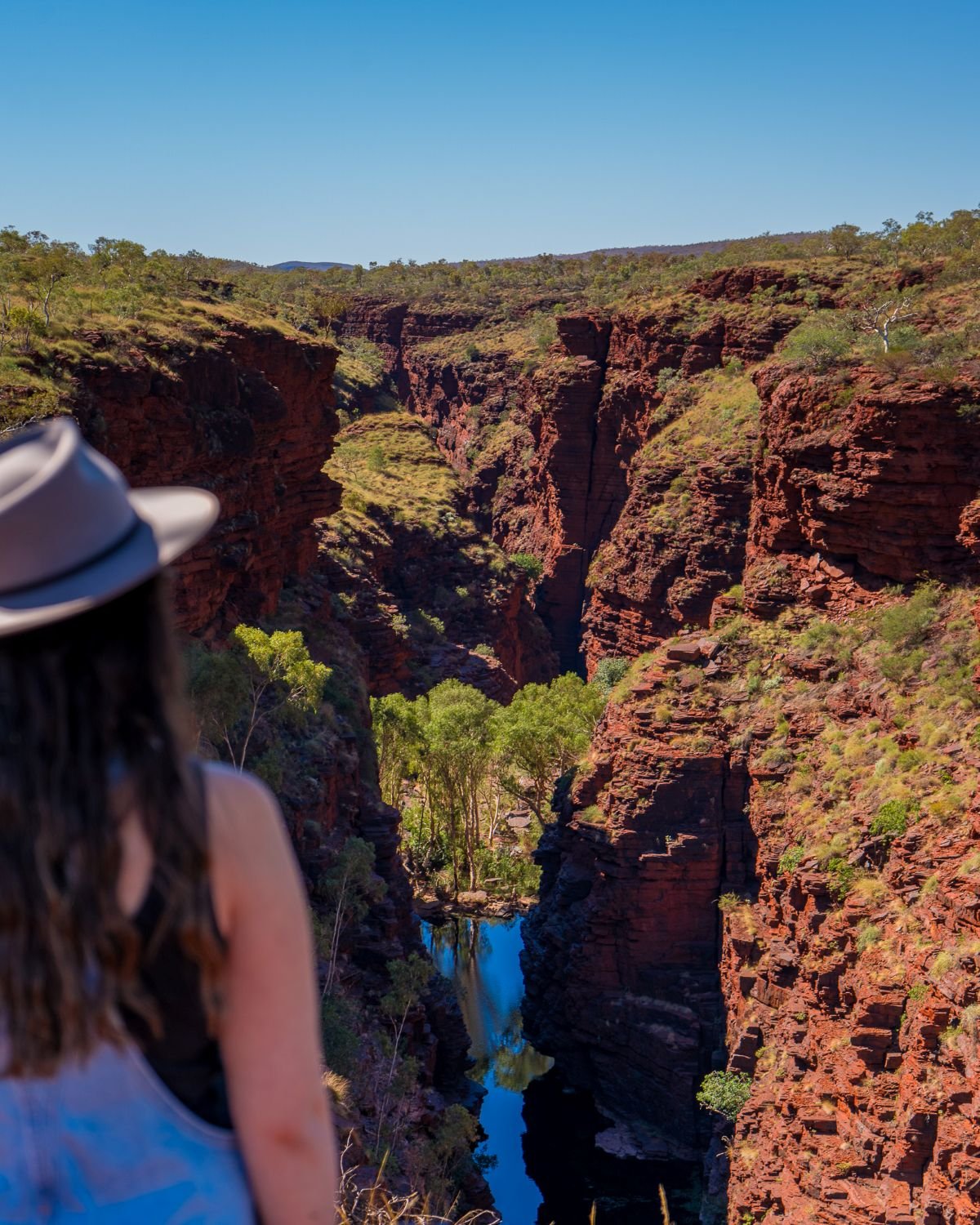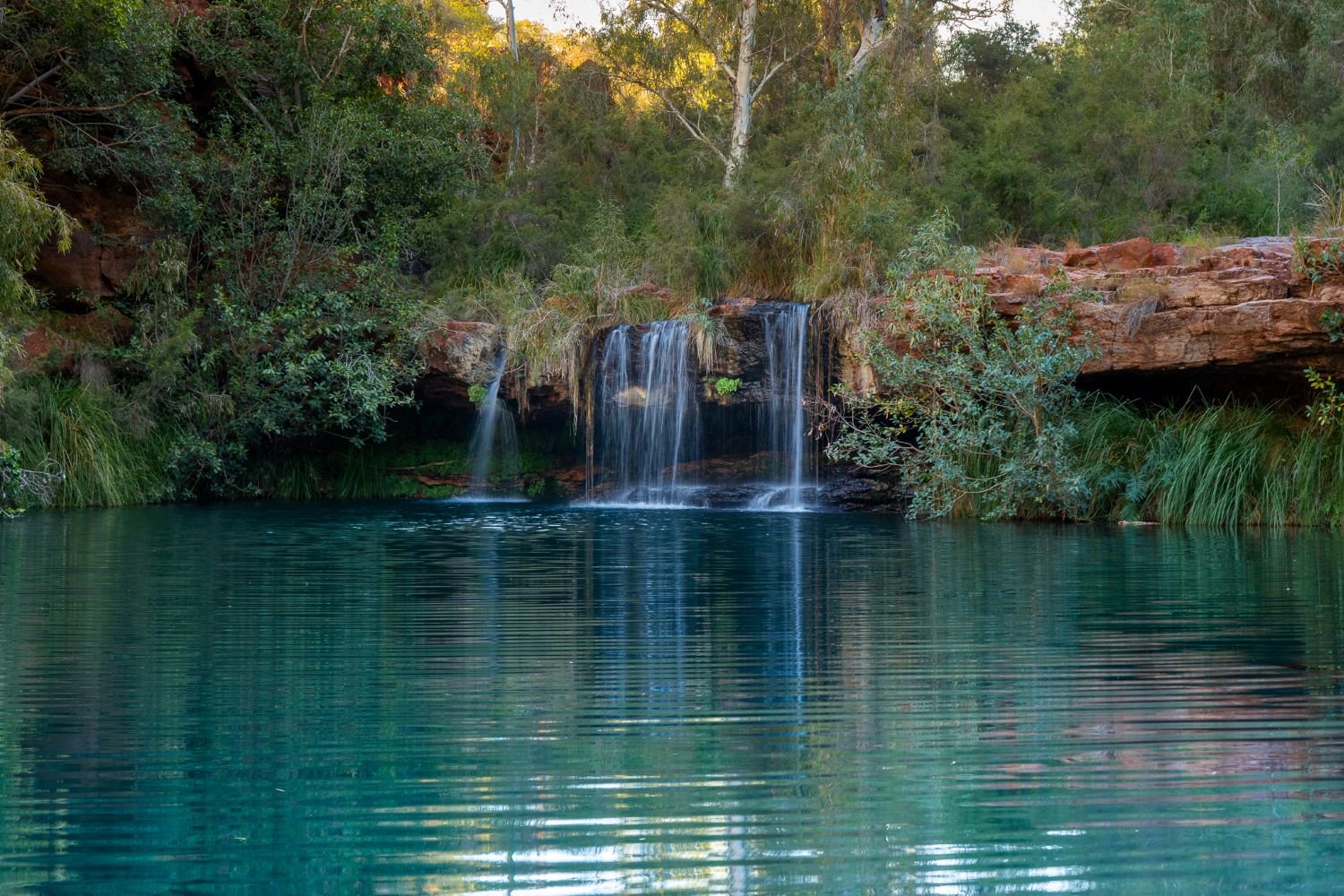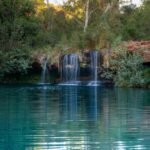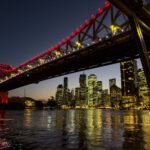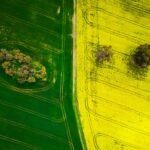Karijini National Park is one of the most spectacular places in Australia, and yet, it’s often overlooked. Located deep in Western Australia’s Pilbara region, this rugged landscape is home to ancient gorges, crystal-clear waterholes, and some of the country’s most rewarding hikes. Whether you’re road tripping through the outback or flying in for a remote adventure, Karijini is a destination that deserves a spot on every traveller’s list.
In this guide, you’ll find everything you need to plan your trip, from the best time to visit and how to get there, to where to stay, what to pack, and the must-do hikes that make Karijini so unforgettable.
When to Visit Karijini
The best time to visit Karijini is during the dry season, between April and October. Days are warm and clear, making it perfect for hiking, swimming, and camping. Water levels in the gorges are ideal after the wet season, so you’ll still get flowing waterfalls and full swimming holes, especially in April and May.
Avoid visiting in summer (November to March) if you can. Temperatures often soar above 40°C, and heavy rains can cause flash flooding in the gorges, leading to track closures and dangerous conditions.
Month-by-month highlights:
- April – May: Flowing waterfalls, full waterholes, cooler mornings and nights.
- June – August: Peak season, warm days and chilly nights, good hiking conditions.
- September – October: Still dry and warm, but with more flies and rising heat.
- November – March: Wet season, extreme heat, risk of flash floods – generally not recommended.
How to Get to Karijini
Karijini might be remote, but getting there is easier than you’d think, it just takes some planning. You can either drive or fly, depending on how much time you have and what kind of experience you’re after.
By Car (Road Trip)
Driving gives you the most freedom and is a popular choice for those exploring Western Australia’s outback. Karijini is roughly:
- 1,400 km from Perth (about 15-17 hours drive)
- 600 km from Exmouth (7-8 hours)
- 280 km from Newman (3-4 hours)
A 4WD is ideal, especially for reaching deeper gorges and unsealed roads. But a 2WD can still get you to most major sites if the weather is dry.
By Air
The nearest airport is Paraburdoo (PBO), serviced by Qantas with direct flights from Perth. From there, it’s about a 1.5 hour drive to the park. You’ll need to hire a car at the airport, preferably a 4WD.
Alternatively, you can fly into Newman, but it’s further away and with fewer rental options.
Fuel & Supplies
Tom Price is the closest town with fuel, groceries, and mobile reception. Stock up before heading into the park, as facilities inside are minimal and distances are long.
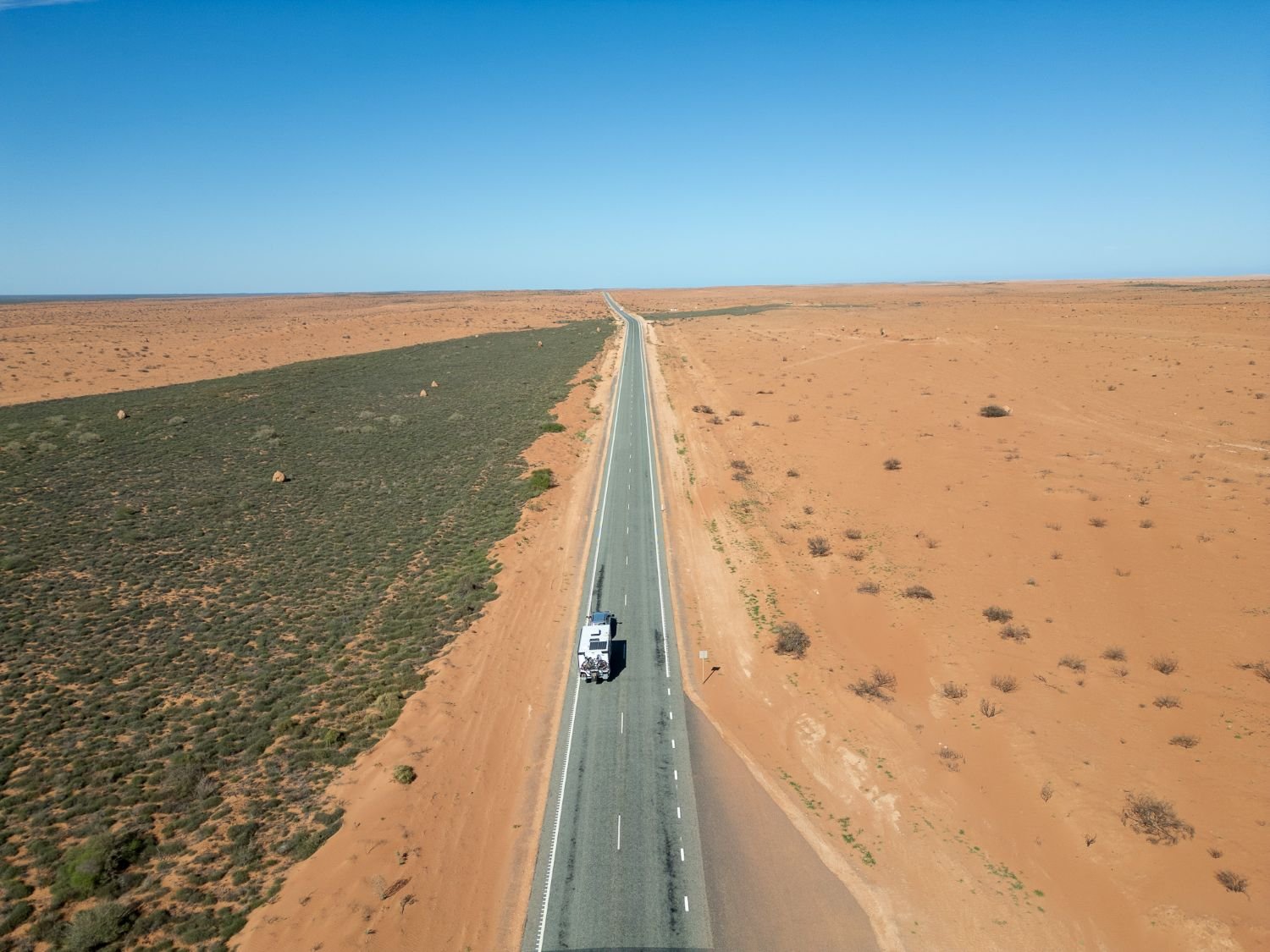
Where to Stay in Karijini
Accommodation in Karijini ranges from basic bush camping to eco-luxury. There aren’t many options, so it’s best to book early, especially during the peak dry season.
Karijini National Park Campgrounds
- Dales Campground (book via Parks & Wildlife):
Located near Fortescue Falls, Fern Pool, and Circular Pool. Basic facilities with toilets, BBQs, and designated sites – no showers or power. - Savannah Campground (Karijini Eco Retreat):
Located on the west side of the park, close to Joffre and Hancock Gorges. Offers unpowered sites, glamping tents, and even air-conditioned eco tents with ensuites. Paid showers, restaurant, and bar onsite.
Nearby Towns
- Tom Price:
If you want more comfort or are travelling with a caravan, Tom Price has a couple of motels, a caravan park, and full amenities like shops, ATMs, and mobile coverage. It’s about 50 minutes from the western park entrance. - Paraburdoo:
Smaller than Tom Price, but has a motel and limited supplies. Convenient if you’re flying in and out but not ideal as a base.
Top Hikes and Gorges in Karijini
Karijini is best explored on foot. Its ancient gorges, natural swimming holes, and red rock formations make every hike feel like an adventure. Trails range from easy walks to technical scrambles through narrow chasms, so there’s something for every level.

Hancock Gorge (Grade 5)
Often called the best hike in the park. You’ll climb, wade, and spider-walk through narrow gorge walls to reach Kermits Pool. Not for the faint-hearted, but absolutely worth it.
Weano Gorge (Grade 4-5)
Starts with an easy trail, then gets more technical as you descend into the gorge. Ends at the stunning Handrail Pool, where you climb down a steel rail to swim in a deep, cool rock pool.
Joffre Gorge (Grade 4)
A mix of natural steps and steep descents that lead to a massive natural amphitheatre. Good for a challenge and some epic photos.
Knox Gorge (Grade 5)
One of the more remote hikes with fewer crowds. Steep entry and exit but incredible views and peaceful swimming spots.
Dales Gorge (Grade 3-4)
An easier option, perfect for first-timers. Includes Fortescue Falls, Fern Pool, and Circular Pool, a loop trail connects them all for a half-day adventure.
Hamersley Gorge (Grade 3)
Accessible by car with a short hike down to a stunning spa-like rock pool. The water here is crystal clear with swirling rock patterns, it’s less intense but still unforgettable.
What to Pack for Karijini
Karijini’s remote location and rugged terrain mean it’s important to come prepared. Whether you’re camping, hiking, or just exploring for the day, having the right gear makes a big difference.
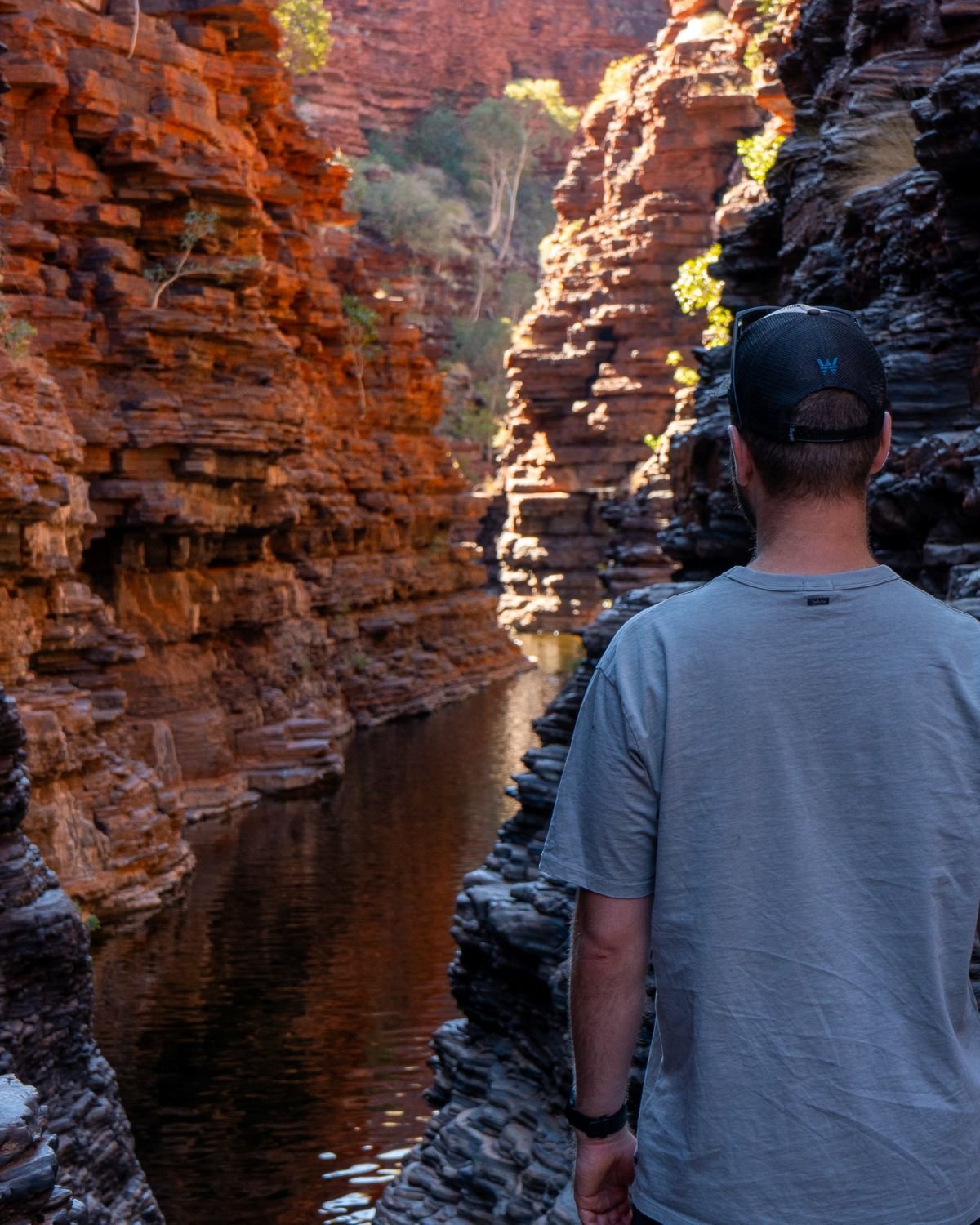
Essentials
- Plenty of water (at least 3-4L per person per day)
- Sun protection – hat, sunglasses, high-SPF sunscreen
- Fly net – especially in the warmer months
- First aid kit – including blister pads and snake bite bandage
- Offline maps – there’s limited reception in the park
- Snacks and meals – no shops in the park
Hiking Gear
- Grippy, closed-toe shoes – wet rocks get slippery fast
- Lightweight backpack – for day hikes
- Dry bag or waterproof phone case
- Towel and swimmers – for all the gorge swims
- Headlamp or torch – helpful around camp or for early hikes
Camping Gear (if staying in the park)
- Tent or swag (plus pegs for hard ground)
- Sleeping bag suited to cold desert nights
- Cooking gear and utensils
- Rubbish bags – leave no trace
Karijini nights can be surprisingly cold, even in winter, so pack warm layers even if the days are hot.
Precautions & Safety Tips
Karijini is beautiful, but it’s also remote, rugged, and can be dangerous if you’re unprepared. A bit of caution goes a long way.
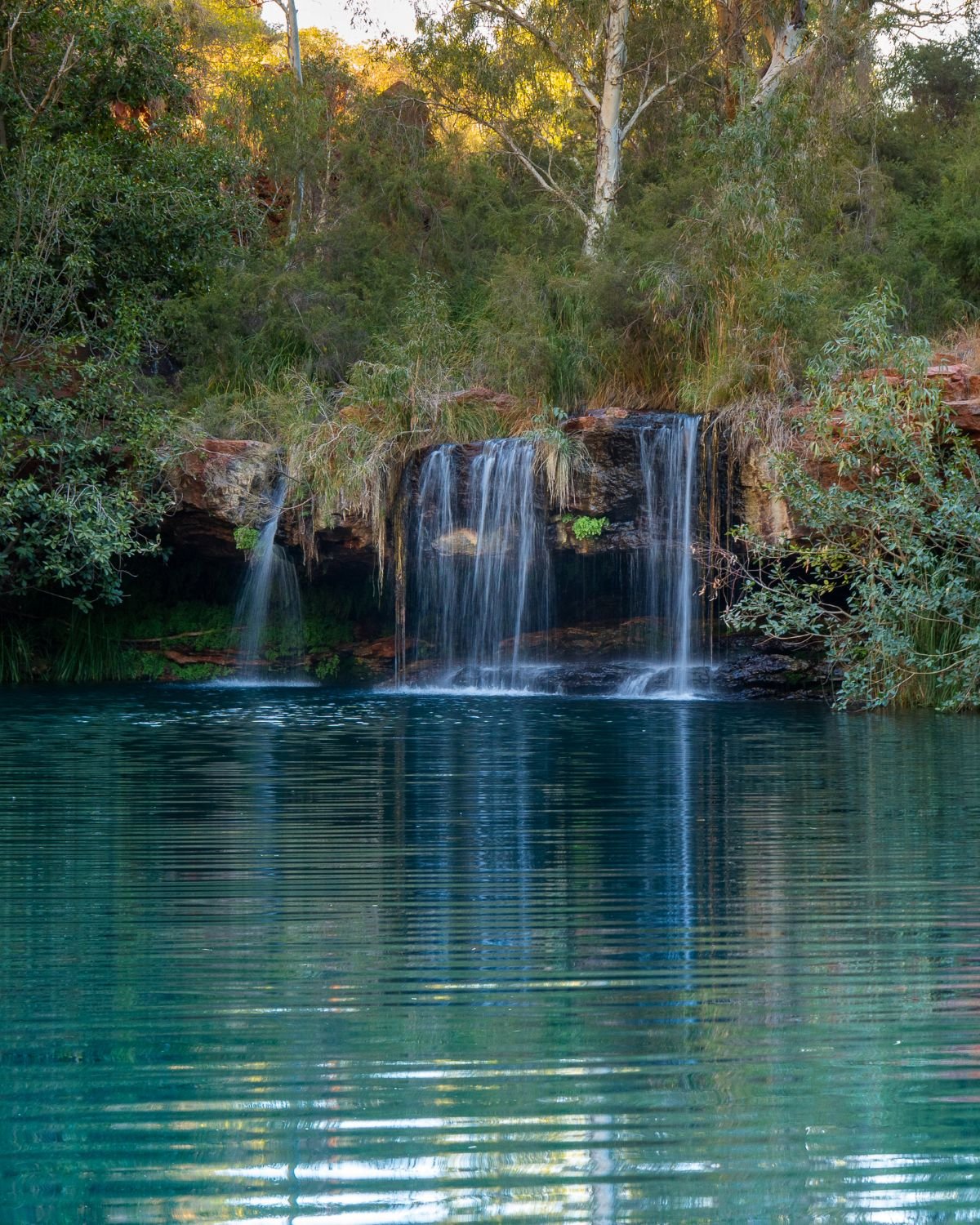
Gorge Safety
- Stick to marked trails. Many gorges have sheer drops, slippery rocks, and fast-changing water levels.
- Don’t attempt Grade 5 hikes unless you’re physically confident and equipped.
- Flash floods can happen without warning, never enter a gorge if rain is forecast, even if it’s far away.
Heat & Weather
- Temperatures regularly exceed 35°C, even in the shoulder seasons. Hike early in the morning and avoid the midday heat.
- Always carry extra water. Dehydration can hit fast out here.
- Nights can be freezing, pack accordingly.
Communication
- There is no mobile signal in most of the park. Telstra works in some nearby towns like Tom Price.
- Let someone know your plans before heading into the park, especially if hiking alone.
Wildlife & Insects
- Snakes are present, watch where you step and don’t reach into crevices.
- Flies can be relentless in warmer months. A fly net will save your sanity.
Emergencies
- There are emergency radios at popular gorges like Weano and Hancock.
- Park rangers patrol the area but are not always close by. Be self-reliant where possible.
Final Thoughts
Karijini isn’t just another national park, it’s a proper adventure. From clambering through narrow gorges to swimming in ancient waterholes, every corner of the park feels like something out of a different world.
It’s remote, yes. And it takes a bit of planning.
But for those willing to make the journey, Karijini delivers in a big way.
Whether you’re spending a couple of days or exploring for a week, use this guide to help plan your trip and make the most of your time in one of Western Australia’s most unforgettable places.
